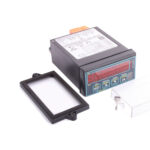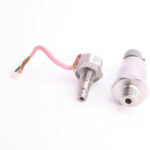The first consideration when selecting a pressure sensor should be the maximum operating pressure to be measured. But there are other equally important considerations to take into account.
Besides the maximum pressure, it is common for most applications to experience other operating pressures in the form of transients, pulsations, pressure spikes etc. And it is essential to consider how the sensor will react to these pressures. Will the sensor continue to operate satisfactorily after severe overload? Is there a possibility that it will leak or burst?
Simply specifying a higher pressure range may not solve the problem because you will sacrifice accuracy.
Determining pressure
Working out the exact pressure profile of any piece of equipment is no trivial matter. Both the sensor and the associated electronics can serve to “hide” the true pressure reading at any given time.
This occurs because the typical electronic circuits used in such applications take around 100ms to convert the signal from the sensor and only update the readout around 2.5 to 3 times per second. Combine this with the effects of the lowpass filter on the input amplifier, which is used to take out noise from cable length etc, and the slow response time of many sensors on the market (especially amplified sensors), and it all adds up to a long sample time for each reading.
The trouble is that during this long sample time any number of pressure spikes may have occurred. The response time of the measuring equipment can easily be 10 times slower than the pressure spikes in the equipment, and so in normal use these spike will never be seen.
When designing a pressure sensor into a piece of equipment, it is advisable to investigate the environment with a fast-responding sensor and a digital storage oscilloscope to determine what pressures are present in the equipment. (Normally such equipment can be rented or the sensor manufacturer will be pleased to help).
Click here for further information on overpressure.
Read more: Index to all of our Technical Notes on Pressure
Have a pressure application you want to discuss? Let us call you…
Why Us?
- Suppliers of top quality strain gauge sensors and transducers to every corner of industry – UK and worldwide
- Over 100 years of expert transducer knowledge
- Our high quality products all come with a 3 year warranty






